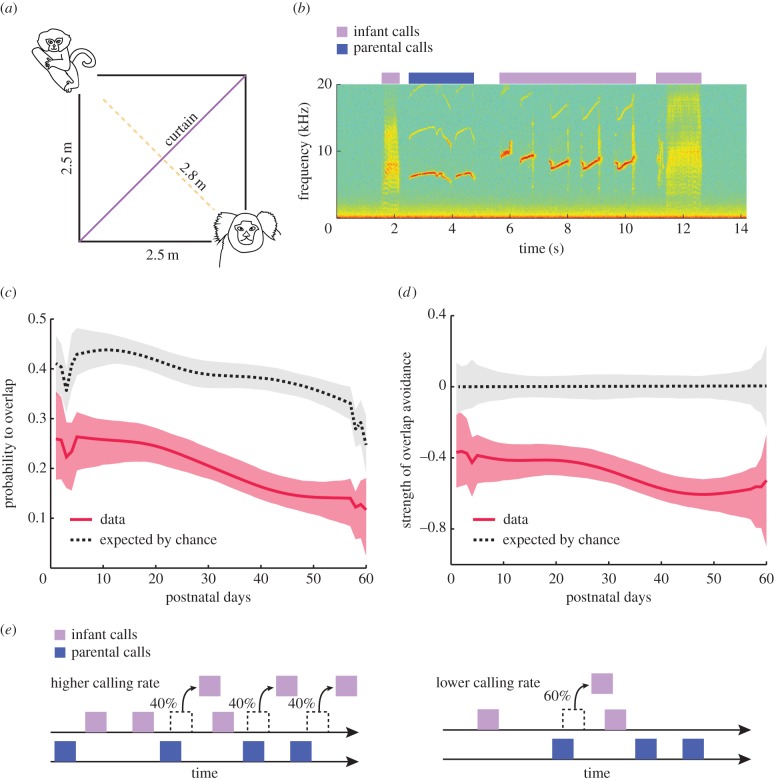Figure 1.
Infant marmosets gradually avoid overlaps over the first two months of life. (a) Schematic of the experimental set-up. (b) Spectrogram showing an example of vocal interaction between infant and parent marmosets. Warmer colours indicate larger power. The blue rectangle indicates the time segment with a parental call and the purple rectangles indicate time segments with infant calls. (c) Development of the probability that an infant call overlaps with an adult call (number of overlaps divided by total number of parental calls). The red line indicates the average probability to overlap and the red shaded region indicates the 95% confidence interval. The black dotted line represents the expected probability of overlap by chance. The grey shaded region represents the 95% confidence interval for the expected probability. (d) Development of the strength of overlap avoidance. The red line indicates the average strength of overlap avoidance and the red shaded region indicates the 95% confidence interval. The grey-shaded region indicates the significance at 5% level for the null hypothesis of equality between the data and the expected probability. (e) Illustration of the possible mechanism of overlap avoidance. Infant calls are produced according to the spontaneous vocalization dynamics until the occurrence of an overlap.

